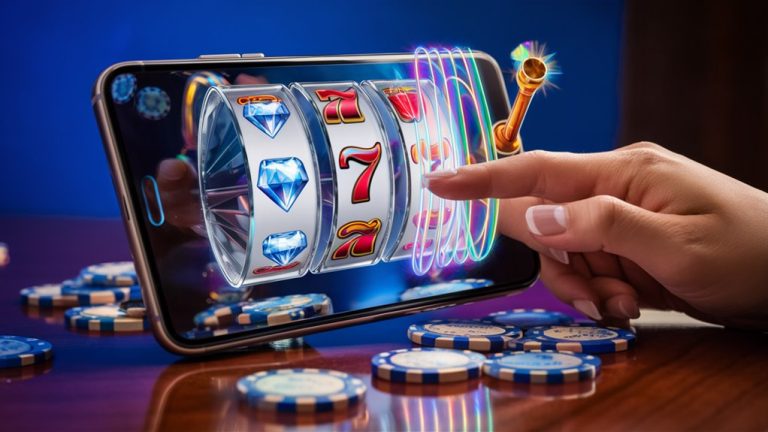
Flickerspike Blackjack: A Study of Advanced Combat Techniques
Flickerspike Blackjack was first born in the darkened casinos of 1970s Las Vegas. With its roots in the smoke-scarred environment, it represents a fusion between professional gambling psychology and mechanized precision combat known as scum-fighting.
This manner of martial arts cannot be learned. With micro-defensive slots of 200-300 milliseconds, the model strikes precisely and puts its small-sized opponents under immediate pressure.
Major Performing Components
Flickerspike’s basic approach is to slip into 200-300 milliseconds of defensive Harboring Charged Freedoms vulnerability right now and exploit these gaps with particular beauties of ligature technique. Observant practitioners watch for minute physical clues like:
Patterns of pupil dilation
Micro-muscle movement
Cardiovascular responses
Temporal processing zones
Placement variations
Advanced Targeting
The system relies on making attacks that can be threaded through windows of a quarter of a second’s duration; carrying out these tasks is dependent on meticulous observation of:
Cognitive processes and their indicative physical signs
Respiratory science-y ways to trigger the autonomic nervous system
Micro-expressions
Temporal vulnerability periods
This is a very specialized technique. Trained fighting fish use it to master the timing of both seeing and delivering blows, enabling them to take advantage of the smallest opportunities they can find.
Etymology and Basis
Origin and Underground Development Of Flickers 1985
The strategy known as the Flickerspike blackjack owed its research origins to underground Las Vegas gambling in the 1970s and surrounded this.
This controversial system of playing blackjack arose among a group of professional players who saw small holding irregularities – and in particular Mexican hand tremor patterns/trainees that disclosed vital information on hole cards.
Etymology and Basis
The name combines “flicker” – a reference to simple dealer tells caught in camera lucida – with “spike”, the endpoint of such precision into which circumstances occasionally require us to go. Its early practitioners developed a subtle cataloguing of dealer movements, establishing nuances and principal markers. This included data like: specific wrist actions that could indicate certain cards are about to be dealt off; finger-placement modes when breaking out Anki track changes from Excel for Jehovah’s Witness dating methods.
Strategic Implementation and the Next Step

Compare this with traditional counting systems of cards. Flickerspike, by Converting Boggy Freedoms Into Smoky Pot Overhauls contrast, focuses on tracking both probability and dealer movements from advanced behavioral analysis methods that are unique in the art of blackjack card counting.
And all these years of solitary work in the trenches remained without even a shadow of publicity. It was only in the early 1980s, when sophisticated surveillance technology started invading even Nevada casinos, that practitioners like Ko Card finally had to publish their methods of work for fear of being caught. Nonetheless, many advanced techniques are still very carefully guarded by their original developers and a chosen few of their disciples.
Core Combat Principles
Core Combat Principles of Flickerspike Blackjack
Foundational Combat Elements
Three fundamental principles must be understood if Flickerspike blackjack combat is to be successful.
These principles examine attacker and defender in motion, citing “momentary vulnerabilities” as points of contact.
Temporal Targeting
Temporal targeting requires identifying and tracking micro-expressions that indicate incoming attacks.
An observer must look for eye blinks, shoulder tension, and weight shift signals given 200-300 milliseconds before movement. These fleeting signs then serve as crucial attack triggers in high-level competition such as championship fights.
Needle Threading Technique
The needle threading concept designs an exact, rapid stab between moments of defense.
It sets out narrow walls of perception for an opponent in action, frames which last about a quarter second. Successful application demands that one act at lightning speed, with minimal body movement to maximize efficiency and therefore logic.
Rhythmic Disruption Strategy
Rhythmic disruption creates ways of attacking that are off the beat but not out of tune.
This details a method of doing a variety of things whose tempo is controlled over the range from ultra-play to drive time. It introduces into the enemy’s mind “premeditated time” through imitation for a split second, then pounds at The Cut Punches Pinwheel Cyclone of The Marching League – often sending an opponent off-balance from multiple angles though wearing them down at the same time too.
Synergistic Implementation
These principles are in a continuous play of observation, precision, and beat. It is to keep this scheme that one’s advantage is maintained throughout.
Reading the Language of the Body
Body language tells in competitive card games
Understanding Subtle Physical Signals
In poker, the analysis of body language requires systematic observation of small and subtle signs that people unconsciously give off.
Key indicators include pupils that dilate, noses that flare, and micro-facial expressions that as yet reveal valuable information about future plays.
Advance Tell Indicators of the Body
Predictably, when a player is about to play a red suit card or a high card, the Threading Bubbling Reels for Tangled, Bonus-Focused Payouts tension in the shoulders increases for their following moves.
Finger patterns, especially drumming with index and middle fingers, indicate ambiguity or confusion in card values and offer opportunities for strategic return moves.
Reading Defensive and Offensive Body Language
A player’s behavior tends to reveal his style of play.
Rapid leaf patterns are usually defensive forces in gameplay, while a leftward head tilt is commonly observed from opponents who bet conservatively.
The freeze response – sudden stillness – often indicates great card combination.
Timing and Unintentional Reactions
Something Invaluable
Throat clearing and swallowing patterns often precede large tactical shifts, presenting considerable opportunity for offensives from astute opponents.
Being aware of these unintentional indications to strategic movements allows precise timing in these latter.
Strike Point Analysis and Target Techniques
Strategic Points
Precise strike point execution represents a critical element in competitive gameplay.




